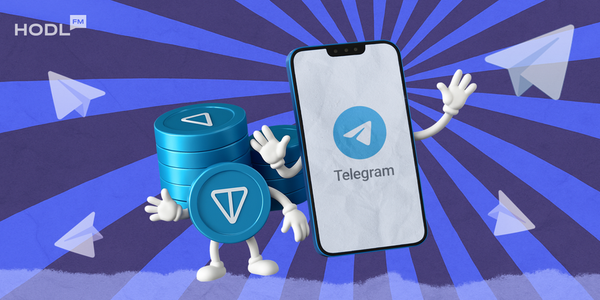Tether, the issuer of the world’s most traded stablecoin USDT, is in discussions to lead a €1 billion ($1.15 billion) funding round for Neura Robotics, a fast-rising German startup developing humanoid robots powered by artificial intelligence. According to reports from the Financial Times, the deal could value Neura between €8 billion and €10 billion, or roughly $9.3 billion to $11.6 billion, making it one of the largest robotics investments ever involving a crypto company.
People with direct knowledge of the discussions said the talks remain ongoing, with Tether and Neura yet to confirm any final agreement. If completed, the round would mark Tether’s biggest investment outside of crypto to date and underscore its push into frontier technologies, including AI-driven robotics, energy, and data infrastructure.
Tether said in a statement:
“We are actively exploring numerous opportunities to continue investing in frontier tech . . . but we won’t be disclosing details of any specific deals until they’re finalised.”
Neura declined to comment.
Neura Robotics prepares for mass production
Based in Germany, Neura Robotics is among Europe’s most promising AI-robotics startups. The company has been developing humanoid robots capable of interacting with humans, learning from their surroundings, and performing both industrial and domestic tasks.
Neura aims to produce 5 million humanoid robots by 2030, beginning with industrial applications before expanding to home robotics. The company has described its goal as achieving an "iPhone moment" for robotics, a mass-scale breakthrough where intelligent robots become as ubiquitous and intuitive to use as smartphones.
In January 2025, Neura raised €120 million in a funding round led by Lingotto, BlueCrest, C4 Ventures, and Volvo Cars Tech Fund, valuing the six-year-old company at roughly one-tenth of what is now being discussed. The startup, which reportedly has a €1 billion order book, is working with Morgan Stanley to organize its new round.
Tether’s growing investment empire
Tether’s potential Neura deal coincides with its most profitable period yet. The company posted a $13.4 billion profit in 2024 and an additional $10 billion through the first three quarters of 2025, according to its latest financial reports.
As the El Salvador-based firm earns income primarily through U.S. Treasury holdings that back its USDT stablecoin, it has used these returns to expand aggressively into new sectors. Tether now backs over 140 companies around the world, spanning industries from agriculture and commodity lending to brain implants and sports investments, such as a partnership with Juventus football club.
This year alone, Tether confirmed its entry into commodity trade lending, with CEO Paolo Ardoino saying the firm has deployed about $1.5 billion into agricultural and oil products. The company has also launched Tether Gold (XAUT), whose market capitalization climbed to $2.1 billion in 2025 amid a surge in gold demand.
Ardoino has outlined a broader vision for Tether’s future:
“The future will be holding trillions of AI agents and billions of robots and billions of humans.”
He has also overseen the creation of an internal research team known as Tether AI, dedicated to decentralized, open-source machine learning systems and peer-to-peer computing infrastructure.
Robotics: the new frontier for tech giants
Tether’s move comes amid a global surge of investment in AI-powered robotics. Nvidia, Tesla, and SoftBank have all bet heavily on humanoid machines as a key growth frontier. Nvidia’s CEO Jensen Huang recently said using AI to scale robotics could create “the largest technology industry the world has ever seen.”
Competition in the humanoid space is intensifying. Elon Musk’s Tesla is developing the Optimus humanoid robot through his AI startup xAI, with plans to produce one million units annually by 2030. Chinese company Unitree Robotics and U.S. startups such as 1X Technologies and Figure AI are also racing to commercialize humanoids for industrial, logistics, and household use.
In that landscape, Neura stands out with its integrated AI-and-robotics architecture developed fully in-house and its modular production model, which investors say could enable faster scalability.
Broader implications for crypto and AI
If completed, Tether’s investment in Neura Robotics would mark one of the largest direct forays from the crypto sector into advanced robotics. It would also demonstrate how stablecoin profits, once seen as solely financial instruments, are now fueling real-world technological development.
As stablecoin markets mature, Tether’s strategy of converting idle profits into high-growth tech investments signals a repositioning. The company is no longer just an issuer of digital dollars but an increasingly influential player in AI, energy, and global innovation infrastructure.
With the Neura deal under discussion, Tether’s next chapter may not unfold on the blockchain alone, but in robotics labs, AI factories, and data centers shaping the next technological revolution.

Disclaimer: All materials on this site are for informational purposes only. None of the material should be interpreted as investment advice. Please note that despite the nature of much of the material created and hosted on this website, HODL FM is not a financial reference resource, and the opinions of authors and other contributors are their own and should not be taken as financial advice. If you require advice. HODL FM strongly recommends contacting a qualified industry professional.





